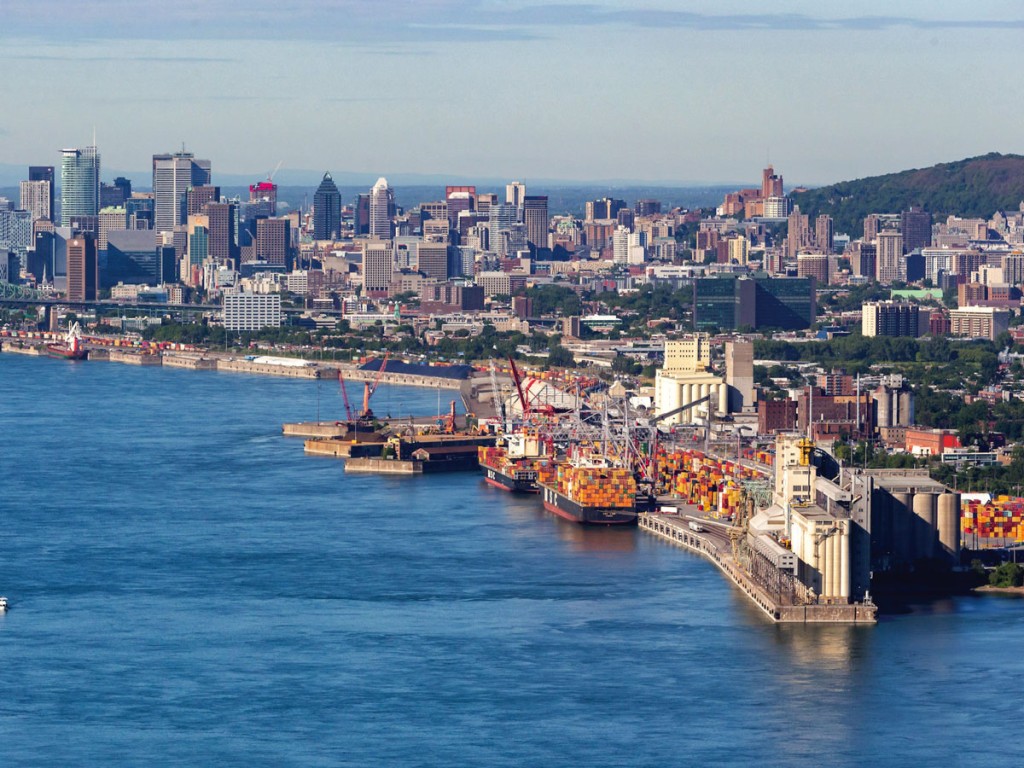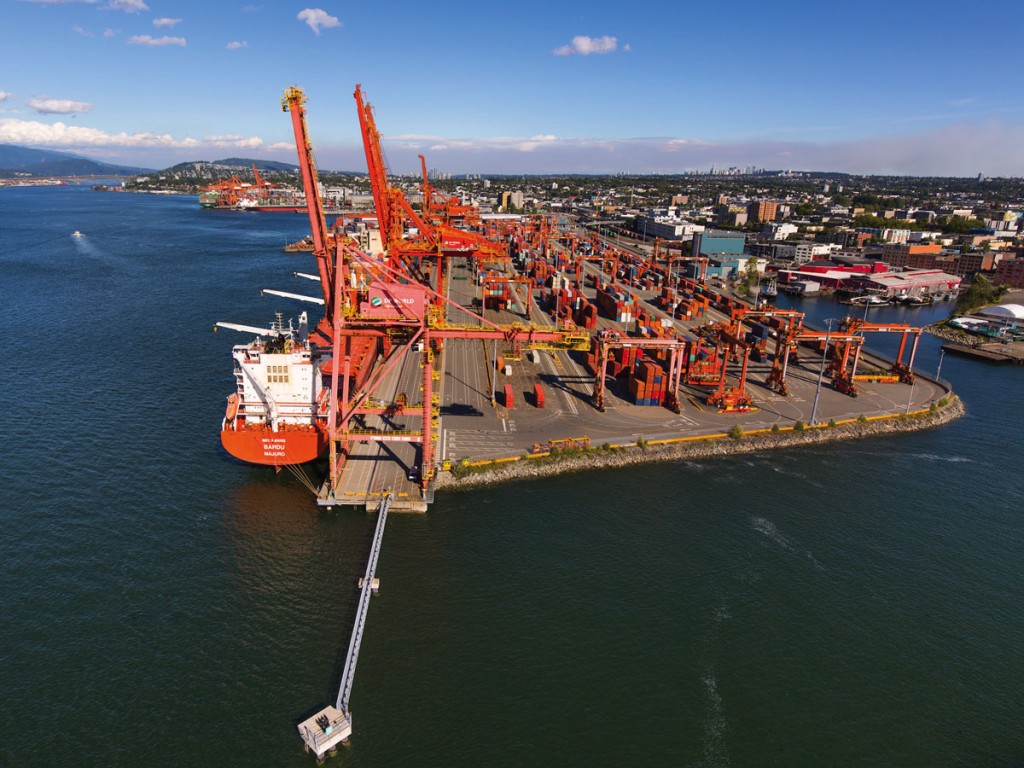Canada’s major container ports on both coasts eyeing expansion.
On both the east and west coasts of Canada, port officials have not allowed current global downward economic trends to alter ambitious, long-term expansion plans. A priority, too, remains social and environmental acceptability for what could be broadly categorized as desired maritime gateways of tomorrow.

Port of Montreal
Organized around four main themes - the environment, innovation, the economy, and society - residents were handed a microphone to express their views. Port officials subsequently indicated they were very happy to get hundreds of comments that will serve as inspiration to develop the port’s next strategic plan, covering 2023-2027.
How does port chief executive Martin Imbleau see Montreal moving forward? On the economic front, he points to two main areas of focus. “The first concerns business continuity. In a context marked by global supply difficulties, it is up to the Port of Montreal to take the necessary measures to ensure the flow of goods at all times and act as a facilitator in the supply chain. The second area of focus is changing trends and practices. The importance of the circular economy and local sourcing will influence which goods pass through the Port.
“As a pillar of the Quebec economy, the Port of Tomorrow must be able to adapt to changing needs to fulfil its core mission sustainably.”
The environment, Mr. Imbleau notes, poses many concerns, such as reducing GHGs, protecting biodiversity and being able to deal with natural disasters, which are among the mission-critical targets for the Port of Tomorrow.
On the social front, it was deemed especially important to reconcile the Port’s commercial and industrial role with the need to connect with the community. Many members of the public emphasized sustainable development of the Port’s historic heritage and better public access to the Port of Montreal’s facilities and the St. Lawrence River.
As far as innovation is concerned, Mr. Imbleau places great importance on linking the innovation projects launched at the Port of Montreal with the actual needs of users in the field, notably truck drivers and railway companies.
Last year saw Montreal’s container throughput bounce back to 1.7 million TEUs, representing a 7.3% increase from 2020 despite the global pandemic, with its predominantly congestion-free operations facilitating cargo flows. Following final regulatory approvals, the Montreal Port Authority recently embarked on the latest phase of its Contrecoeur container terminal expansion by naming three final groups to design, build, finance, operate and maintain the project: Axium Infrastructure Canada and Pomerleau Canada. Ports America Holdings, and Terminal Investment Limited. Expected to be commissioned by the end of 2026, the terminal costing about US$750 million is destined to handle some 1.15 million TEUs annually.
Port of Halifax
For its part, the Port of Halifax hosted on September 10 an inaugural community event headed One Port City Day. For this year at least, this event replaced Halifax Port Days which for several decades has been an annual two-day gathering of mainly industry representatives and featuring a prominent keynote speaker.
The One Port City Day was an all-ages event filled with family-friendly activities, vessel exhibits, and information on career pathways and opportunities within the port community.
Exhibitors included CN, PSA Halifax, Canadian Coast Guard, Commissionaires Nova Scotia, Halifax Regional Police, Department of Fisheries and Oceans, and Nova Scotia Community College.
Captain Allan Gray, president, and CEO of the Halifax Port Authority, said it was “an opportunity to introduce the broader community to our working waterfront and bring the port and community together as One Port City.”
Emily Richardson, communications coordinator, told AJOT: “It is a community-focused event, aimed at encouraging the local community to visit the seaport and discover all that goes on here. We are still looking into what to do with the original Port Days model and what it might look like.”
The port’s long-term plan is summed up in its vision of Canada’s Ultra Atlantic Gateway – thanks to its deepened berths able to handle the biggest containerships calling on North America’s eastern seaboard. Part of Ocean Terminals has been identified to create additional yard space for safe and efficient operations.
The corporate blueprint identifies the benchmarks that will need to be achieved before infrastructure expansion is necessary. It supports “the notion of optimizing before expanding to develop the port to be in the best possible position for future sustainable investment.”
In 2021, Halifax handled 595,751 TEUs, a 17.5% jump over the previous year. By 2070, port officials estimate the numbers could potentially surge to 1.6 million TEUs.

Port of Vancouver
The Vancouver Fraser Port Authority, in partnership with DP World, recently announced that the port authority-led Centerm Expansion Project and South Shore Access Project have been awarded the Institute for Sustainable Infrastructure (ISI) Envision Platinum award, the highest rated award by ISI.
“We are proud to receive our second Platinum award from the Institute for Sustainable Infrastructure,” said Robin Silvester, president, and CEO of the Vancouver Fraser Port Authority (VFPA). “This award again highlights our commitment to developments that support Canada’s trade agenda in a way that protects the environment and considers local communities, as we advance towards our vision for the Port of Vancouver to be the world’s most sustainable port. We would also like to acknowledge the port community for their ongoing support of port- authority led projects that will help strengthen our gateway while enhancing its sustainability.”
It is part of a suite of gateway infrastructure projects across the Lower Mainland, under the Greater Vancouver Gateway 2030 strategy.
Slated to be completed by 2023, the Centerm Expansion Project and South Shore Access Project have been designed to help meet increasing demand for container trade through the port which handled a record 3.7 million TEUs in 2021. This work will increase container-handling ability at Centerm Terminal by two-thirds, from 900,000 20-foot equivalent unit containers (TEUs) to 1.5 million TEUs. By increasing the terminal footprint by only 15% and rearranging the terminal operations, DP World, the terminal operator, will be able to handle a more than 60% increase in containers.
“Sustainability is key to developing a better Canada and a better world,” said the Minister of Transport, Omar Alghabra. “With the Government of Canada’s financial contribution through the National Trade Corridors Fund program, the Vancouver Fraser Port Authority is leading the way in building infrastructures that are greener and better able to respond to climate change.”
The National Trade Corridors Fund (NTCF) is a competitive, merit-based program designed to help infrastructure owners and users invest in the critical transportation assets that support economic activity in Canada. In 2018 and 2019, the port authority received $300 million from the Government of Canada’s NTCF to advance multiple infrastructure projects throughout the Lower Mainland, including the South Shore Access Project.
Meanwhile, controversy continues to surround the VFPA’s long-proposed Roberts Bank Terminal 2 project that Mr. Silvester regards as essential to meet Asian cargo demands by 2030. The federal government has delayed a final decision for several years due to environmental issues. And GCT Terminals, operator of Deltaport (biggest terminal at the port) is strongly opposing RBT2 with an alternative (expanding Deltaport with an additional berth) that would be much cheaper and meet any required capacity expansion without environmental damage.






